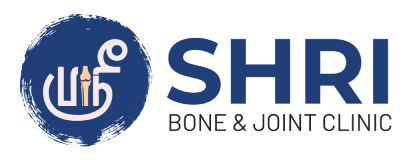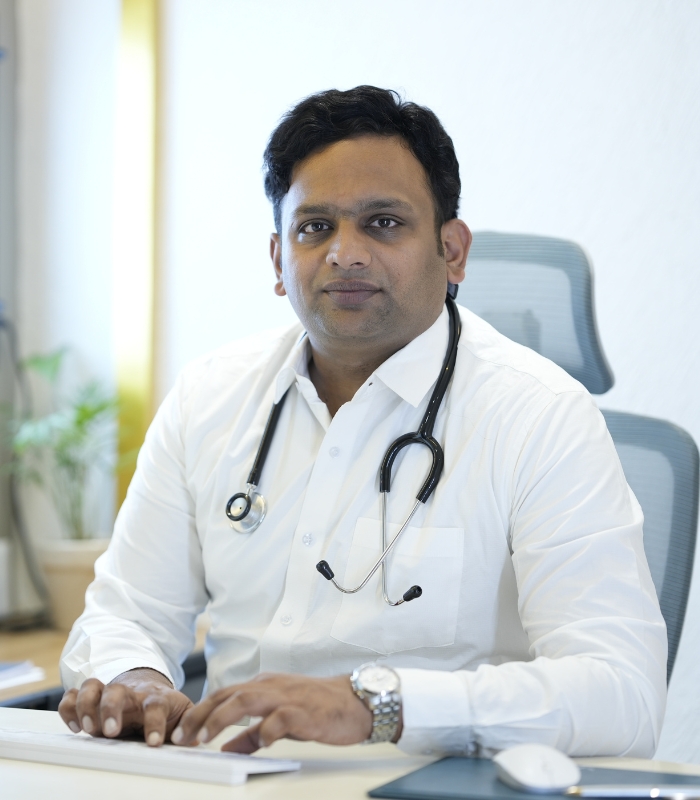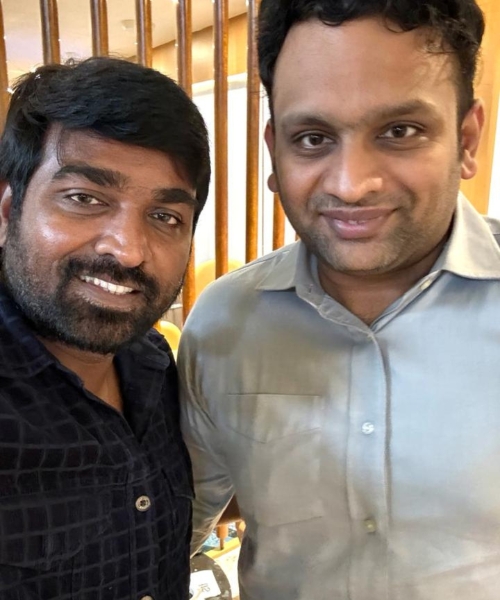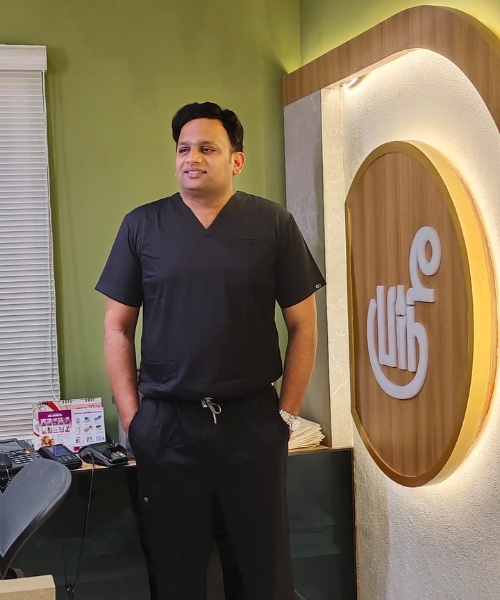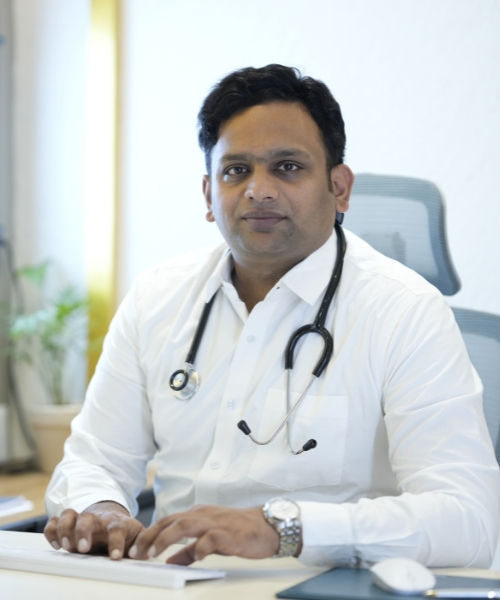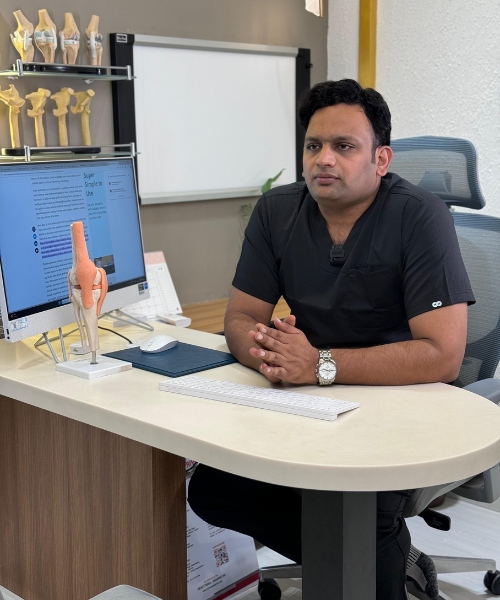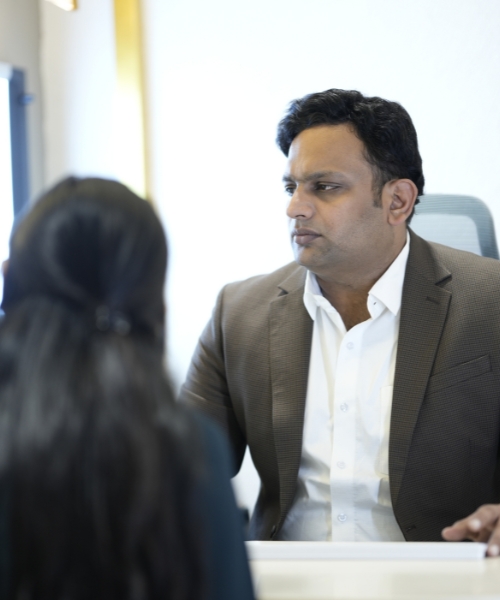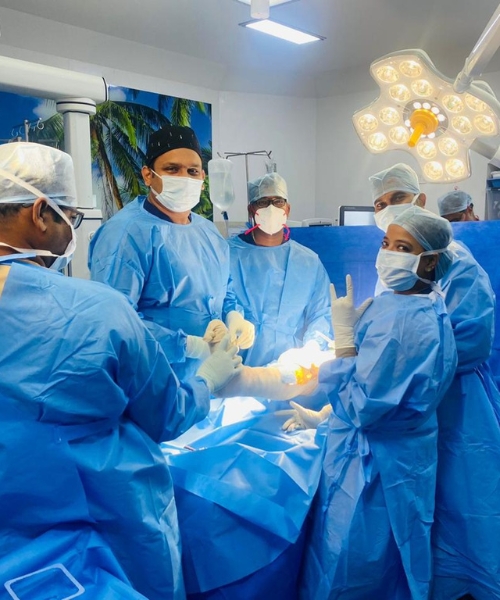What is Kyphosis?
Kyphosis is a spinal disorder characterized by an excessive forward curvature of the upper back, resulting in a rounded or hunched posture.
This condition can occur at any age but is particularly common in older adults due to degenerative diseases such as osteoporosis, which weakens the vertebrae and can lead to compression fractures.
Kyphosis can also result from developmental issues during childhood, such as Scheuermann’s disease, or be caused by trauma, infection, or muscular dystrophy.
Symptoms of kyphosis include back pain, stiffness, and an exaggerated forward rounding of the back. In severe cases, it can affect lung function and lead to breathing difficulties.
Treatment depends on the severity and underlying cause and may include physical therapy, bracing, pain management, and in extreme cases, surgery to correct spinal alignment. Early detection and intervention are crucial to managing symptoms and preventing progression.
Causes
Postural Kyphosis
- Poor posture, often from slouching or hunching over, especially in children and adolescents.
- Typically, this form of kyphosis is flexible and can be corrected with postural changes.
Congenital Kyphosis
- Present at birth due to the abnormal development of the spine in the womb.
- Often requires surgical intervention to correct.
Scheuermann’s Disease
- A condition that usually becomes apparent during adolescence.
- It results in a more rigid form of kyphosis due to the vertebrae wedging forward.
Osteoporosis
- A condition that weakens bones, making them more susceptible to fractures.
- Vertebral fractures due to osteoporosis can lead to kyphosis, particularly in older adults.
Degenerative Disc Disease
- Age-related wear and tear on the spinal discs can lead to kyphosis.
- The intervertebral discs lose height and shape, causing the spine to curve abnormally.
Trauma or Injury
- Fractures or injuries to the spine can result in kyphosis if the vertebrae heal improperly.
Infections
- Spinal infections such as tuberculosis or osteomyelitis can damage the vertebrae, leading to kyphosis.
Tumors
- Spinal tumors can weaken the vertebrae and cause them to collapse, resulting in kyphosis.
Muscular Dystrophy
- Neuromuscular conditions like muscular dystrophy can affect the muscles that support the spine, leading to abnormal curvature.
Spinal Surgery
- Surgery on the spine can sometimes lead to kyphosis, especially if there is a failure to maintain proper alignment during healing.
Ankylosing Spondylitis
- A type of arthritis that primarily affects the spine and can lead to severe, rigid kyphosis.
Risk Factors
Age
- Older adults are more susceptible to conditions like osteoporosis, which can lead to kyphosis.
- Age-related degeneration of the spine can also contribute.
Gender
- Women are at higher risk, particularly for kyphosis related to osteoporosis, due to postmenopausal bone density loss.
Genetics
- Family history of spinal conditions can increase the risk of congenital or developmental kyphosis.
Poor Posture
- Slouching or hunching over, particularly in children and adolescents, can lead to postural kyphosis.
Osteoporosis
- Weakening of the bones due to osteoporosis can lead to vertebral fractures and kyphosis.
Spinal Conditions
- Conditions like Scheuermann’s disease, which typically affects adolescents, can increase the risk of kyphosis.
Spinal Injuries
- Fractures or other injuries to the spine can lead to deformities that result in kyphosis.
Neuromuscular Disorders
- Disorders such as muscular dystrophy or cerebral palsy can affect the muscles supporting the spine, leading to kyphosis.
Inflammatory Diseases
- Conditions like ankylosing spondylitis can cause inflammation of the vertebrae, leading to kyphosis.
Nutritional Deficiencies
- Lack of sufficient calcium and vitamin D can weaken bones, increasing the risk of kyphosis, especially in older adults.
Physical Inactivity
- Lack of exercise can contribute to poor muscle tone and posture, increasing the risk of postural kyphosis.
Obesity
- Excess weight can put additional strain on the spine, potentially leading to kyphosis.
Smoking
- Smoking can reduce bone density and increase the risk of osteoporosis, indirectly leading to kyphosis.
Chronic Conditions
- Chronic conditions such as rheumatoid arthritis can affect spinal health and increase the risk of developing kyphosis.
Symptoms
- An exaggerated, rounded, or hunched back appearance.
- Ranging from mild to severe, often in the upper back.
- Reduced spinal flexibility and difficulty in straightening the back.
- Due to muscle strain from maintaining posture.
- Discomfort when touching the curved area of the spine.
- Difficulty in maintaining balance, increasing the risk of falls.
- Noticeable reduction in height due to spinal curvature.
- Severe kyphosis can compress the chest cavity, leading to respiratory issues.
- In extreme cases, the curvature can affect the digestive organs, causing problems such as acid reflux.
- Numbness, tingling, or weakness in the legs due to spinal cord compression in severe cases.
Diagnosis
Physical Examination
During a physical examination, your doctor will likely:
- Ask about your medical history and symptoms
- Check your posture and alignment
- Look for any visible signs of curvature in your spine
- Feel your spine for any tenderness or abnormalities
- Test your range of motion in your spine
- Check your reflexes and muscle strength
Imaging Tests
X-rays are the most common imaging test used to diagnose kyphosis. They can help determine the degree of curvature in your spine and identify any underlying problems with your vertebrae.
Other imaging tests, such as CT scans or MRIs, may be ordered in some cases. These tests can provide more detailed images of your spine and may be helpful if your doctor suspects a more complex cause of your kyphosis, such as a tumor or infection.
Treatment Options
Surgical treatment
Surgery is typically reserved for severe cases of kyphosis that are causing pain, neurological problems, or difficulty breathing. The most common surgical procedure for kyphosis is spinal fusion. In spinal fusion, the surgeon uses bone grafts and metal implants to fuse together the vertebrae in the affected area. This helps to straighten the spine and prevent further curvature.
Non-surgical treatments
- Observation: In some cases, particularly for mild kyphosis that isn’t causing any pain or problems, your doctor may recommend observation. This means they’ll monitor your condition over time to see if the curvature progresses.
- Pain medication: Over-the-counter pain relievers, such as acetaminophen (Tylenol) or ibuprofen (Advil, Motrin IB), can help relieve pain associated with kyphosis.
- Physical therapy:Physical therapy exercises can help strengthen the muscles that support your spine and improve your posture. This can help to reduce pain and improve your overall function.
- Lifestyle changes: Maintaining a healthy weight can help to reduce stress on your spine and improve your posture. You may also benefit from practicing good posture while sitting, standing, and sleeping.
- Calcium and vitamin D supplements: If you have osteoporosis or are at risk for developing it, your doctor may recommend calcium and vitamin D supplements to help strengthen your bones.
- Spinal bracing: For children and adolescents with Scheuermann’s kyphosis, which occurs during growth spurts, wearing a spinal brace for several hours a day may help to stop the progression of the curvature.
Rehabilitation and Recovery
Rehabilitation for kyphosis focuses on strengthening muscles and improving posture to reduce pain and prevent worsening. A physical therapist designs exercises targeting back extensors, core, and glutes for better spinal support. Stretching exercises for the chest and shoulders improve flexibility. You’ll also learn posture exercises for sitting, standing, and sleeping.
Ergonomics plays a role too. Maintain good posture while sitting with feet flat on the floor, knees at a 90-degree angle, and a straight back. Take breaks from sitting often. Choose a supportive chair.
Lifestyle changes include maintaining a healthy weight, eating a calcium and vitamin D rich diet, and quitting smoking. Pain medication may be prescribed if needed. Regular doctor visits and X-rays help monitor progress. Remember, recovery takes time and effort, but following your doctor’s plan can significantly improve your condition.
Post-Treatment Care
- Maintain Physical Therapy: Regularly perform prescribed exercises to strengthen core and back muscles, and improve posture.
- Practice Ergonomics: Uphold good posture while sitting, standing, and sleeping. Take breaks from prolonged sitting and use supportive furniture.
- Healthy Habits: Maintain a healthy weight, eat a calcium and vitamin D rich diet, and avoid smoking to support bone health.
- Posture Awareness: Be mindful of your posture throughout the day and make adjustments as needed.
- Regular Checkups: Schedule regular doctor visits for monitoring and potential X-rays to track your spine’s curvature.
Expected Recovery Timeline
Non-surgical treatment: For mild kyphosis or those managed with exercise and lifestyle changes, significant pain relief and improved function can occur within weeks or months. However, full postural correction might be a gradual process taking up to a year.
Surgery: Following kyphosis surgery, the initial focus is on pain management and regaining basic mobility. This might take a few weeks. For most people, returning to work or school is possible within a month, but with limitations on strenuous activity. Full recovery with improved posture and pain relief typically takes 3-6 months, as the bones fuse and strengthen completely.
Tips for Maintaining Spinal Health
Posture Power
- Stand Tall: Maintain good posture throughout the day while sitting, standing, and sleeping. Imagine a string pulling you up from the crown of your head for optimal spinal alignment.
- Ergonomic Edge: Set up your workspace ergonomically. Use a supportive chair with good lumbar support, keep your feet flat on the floor, and position your computer screen at eye level to avoid hunching.
- Shift and Stretch: Avoid prolonged sitting. Get up and move around every 30 minutes to prevent muscle stiffness that can contribute to poor posture. Take short stretches to loosen tight muscles in your chest and shoulders.
Strong Core, Strong Spine
- Exercise for Strength: Regularly perform exercises that target your core and back muscles. This strengthens the muscles that support your spine and improves overall stability.
- Low-Impact Activities: Choose low-impact exercises like swimming, yoga, or walking to promote spinal health without excessive strain.
Healthy Habits
- Weight Management: Maintain a healthy weight to avoid putting excess stress on your spine.
- Diet for Strength: Eat a balanced diet rich in calcium and vitamin D, which are essential for bone health and can help prevent osteoporosis, a condition that weakens bones and can contribute to spinal problems.
- Hydration Matters: Drink plenty of water throughout the day to keep your spinal discs hydrated and functioning properly.
Say No to Smoking: Smoking reduces blood flow to the spine, hindering healing and promoting degeneration.
Listen to Your Body
- Proper Lifting Technique: When lifting objects, use your legs, not your back. Bend your knees and keep your back straight to avoid straining your spine.
- Mind Your Body: Pay attention to your body’s signals. If you experience back pain, don’t ignore it. Consult a healthcare professional to determine the cause and get proper treatment.
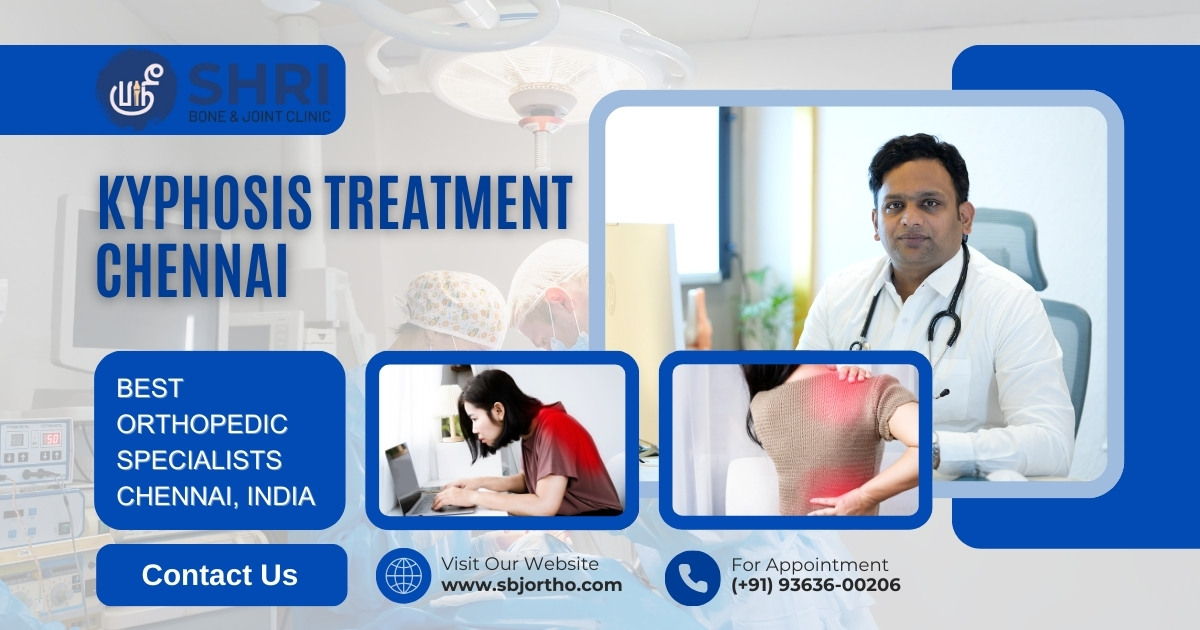
Why Choose Shri Bone & Joint Clinic for Kyphosis Treatment in Chennai, India?
Shri Bone & Joint Clinic in Chennai, India, stands out for kyphosis treatment due to its comprehensive approach and esteemed reputation. Led by renowned orthopedic specialists, the clinic offers personalized care tailored to each patient’s unique needs. State-of-the-art facilities and advanced medical technologies ensure precise diagnosis and effective treatment planning. We have the best Orthopedic Specialists Chennai, India.
With a commitment to excellence, Shri Bone & Joint Clinic provides a supportive environment where patients feel empowered and confident in our treatment decisions. Moreover, the clinic’s dedication to research and innovation ensures access to cutting-edge techniques and therapies for optimal outcomes. Choosing Shri Bone & Joint Clinic means choosing compassionate care, expertise, and a path towards restored spinal health.
Best Doctor for Kyphosis Treatment in Chennai, India
Dr. Shriram Krishnamoorthy, renowned orthopedic specialist at Shri Bone & Joint Clinic, is widely regarded as the best doctor for kyphosis treatment in Chennai, India. With extensive experience and expertise in spinal disorders, Dr. Shriram Krishnamoorthy offers the best Back Pain Treatment and Lower Back Pain Treatment Chennai, India.
Known for individualized treatment plans tailored to each patient’s needs, Dr.Shriram Krishnamoorthy ensures optimal outcomes with a focus on restoring spinal health and improving quality of life. Patients trust Dr.Shriram Krishnamoorthy for his dedication to excellence, commitment to innovation, and track record of successful kyphosis treatments, making him the top choice for those seeking comprehensive spinal care in Chennai.
Cost of Kyphosis Treatment in Chennai, India
On average, the cost of kyphosis treatment in Chennai can range from INR 50,000 to INR 3,00,000 for conservative management and can go up to INR 2,00,000 to INR 8,00,000 or more for surgical procedures, including hospitalization, surgeon’s fees, anesthesia, and post-operative care.
What degree of kyphosis needs surgery?
Surgery is typically considered for kyphosis exceeding 75-80 degrees or causing severe pain, neurological symptoms, or functional impairment.
Can kyphosis be cured permanently?
In some cases, especially with early detection and appropriate treatment, kyphosis can be effectively managed or corrected, but “cure” may not always be guaranteed.
Can exercise reverse kyphosis?
Exercise can improve posture and strengthen muscles, potentially reducing kyphosis, but may not fully reverse severe cases. Consult a professional.
Can physiotherapy cure kyphosis?
Physiotherapy can help manage kyphosis by improving posture and strengthening muscles, but it may not cure the condition completely.
What is the latest treatment for kyphosis?
The latest treatments for kyphosis include minimally invasive surgeries like kyphoplasty, vertebral augmentation, and innovative spinal bracing techniques.
Better Health Care is Our Mission
Phone
Shri Bone & Joint clinic
#1, 2nd Main Road
Nehru Nagar
Adyar
Chennai - 20.
Phone: 044 3549 0206
MGM Healthcare
No.72,
Nelson Manickam Road,
Collectorate Colony, Aminjikarai,
Chennai - 600029.
Phone: 044 4524 2424
